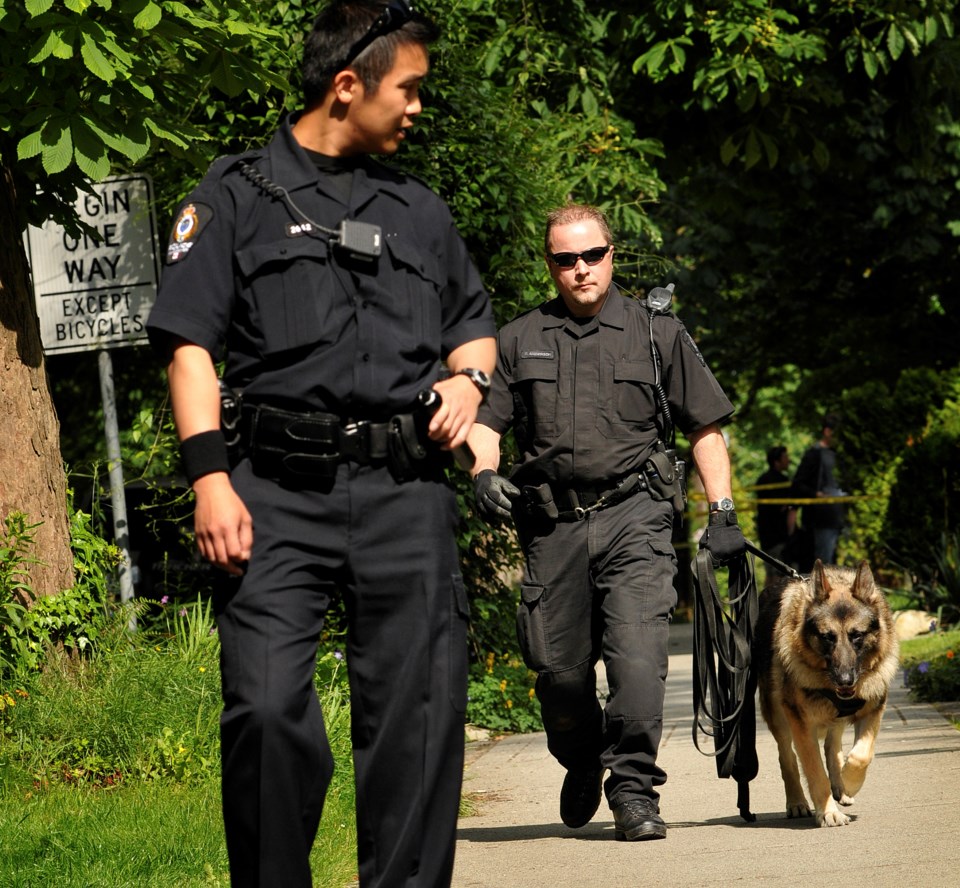The Pivot Legal Society will continue to keep a close watch on how the Vancouver Police Department and other detachments deploy their police dogs since new standards imposed by the provincial government came into effect this month.
As of Sept. 1, all police departments in B.C. must adhere to standards the government first announced in November 2014 that include officers completing a detailed report for each bite incident, taking photographs of injuries and providing related data to the police services division of the Ministry of Justice.
“There’s no question that the departments are going to abide by the regulations, but one of the questions is: How will they be interpreted?” said Douglas King, a lawyer at Pivot who led a campaign to pressure police departments to bring in measures to reduce the number of injuries people suffer from dog bites.
King believes rules around when a dog can be used and when deployment is justified are open to interpretation. But, he said, he welcomed the requirement that police now have to photograph a dog bite victim’s injury, if the person gives consent.
“A lot of times when I talk to people about police dog cases, you can talk about it in the abstract,” he said. “But until you actually see the pictures and the damage a police dog can do to somebody, a lot of it doesn’t sink in. So I do think [photographs] are a positive development.”
In June 2014, Pivot released a report that showed police dogs in B.C. bit and injured 490 people between early 2010 and early 2012. The legal society tallied that number after collecting data over three years from Freedom of Information requests, statistics from the Office of the Police Complaint Commissioner and various police departments.
Pivot determined that while the VPD polices 58 per cent of B.C.’s urban population, its dog squad was responsible for 80 per cent of all police dog bites in urban areas. In 2011, there were 14.75 dog bites per 100,000 persons in Vancouver compared to 12.73 in Abbotsford, 2.5 in Victoria and 2.34 in West Vancouver.
Saanich and New Westminster, where departments use the bark-and-hold method, had no recorded police dog bites in 2011. The majority of police forces, including the VPD, train dogs to bite and hold a suspect rather than the bark-and-hold method.
The new standards — the first of their kind in Canada — require annual testing of every dog handler team. Notably, dogs must demonstrate their ability to be called off a suspect, remain under control while biting and promptly release a bite upon hearing a handler’s command.
Const. Brian Montague, a VPD media relations officer, said in an email to the Courier that “for the most part, the standards set by the government have for some time been standard practice for the VPD.” In July, the Vancouver Police Board approved an updated policy on the use of the VPD’s dogs, including clear guidelines for taking photographs, giving “loud, verbal” warnings before a dog is deployed and how the use of a dog “must be proportional to the level of risk posed to the officer, the suspect and the public.”
The new VPD policy also defined police dogs as “intermediate weapons in the context of use of force.”
Montague said the VPD’s dogs are “a tremendous asset” to the department and “help at hundreds and hundreds of calls every year.” He said when a dog is deployed and contact is made with a suspect, “it often results in sort of injury, unfortunately.”
Added Montague: “Injuries are usually minor in nature and are treated by paramedics at the scene before the suspect goes to jail. Serious injuries that require the suspect to go to hospital for treatment are all reported to the [Independent Investigations Office]. However, I would suggest that most cases where a [dog] is present, they are not deployed because the suspect is compliant or other options are more appropriate.”
@Howellings



